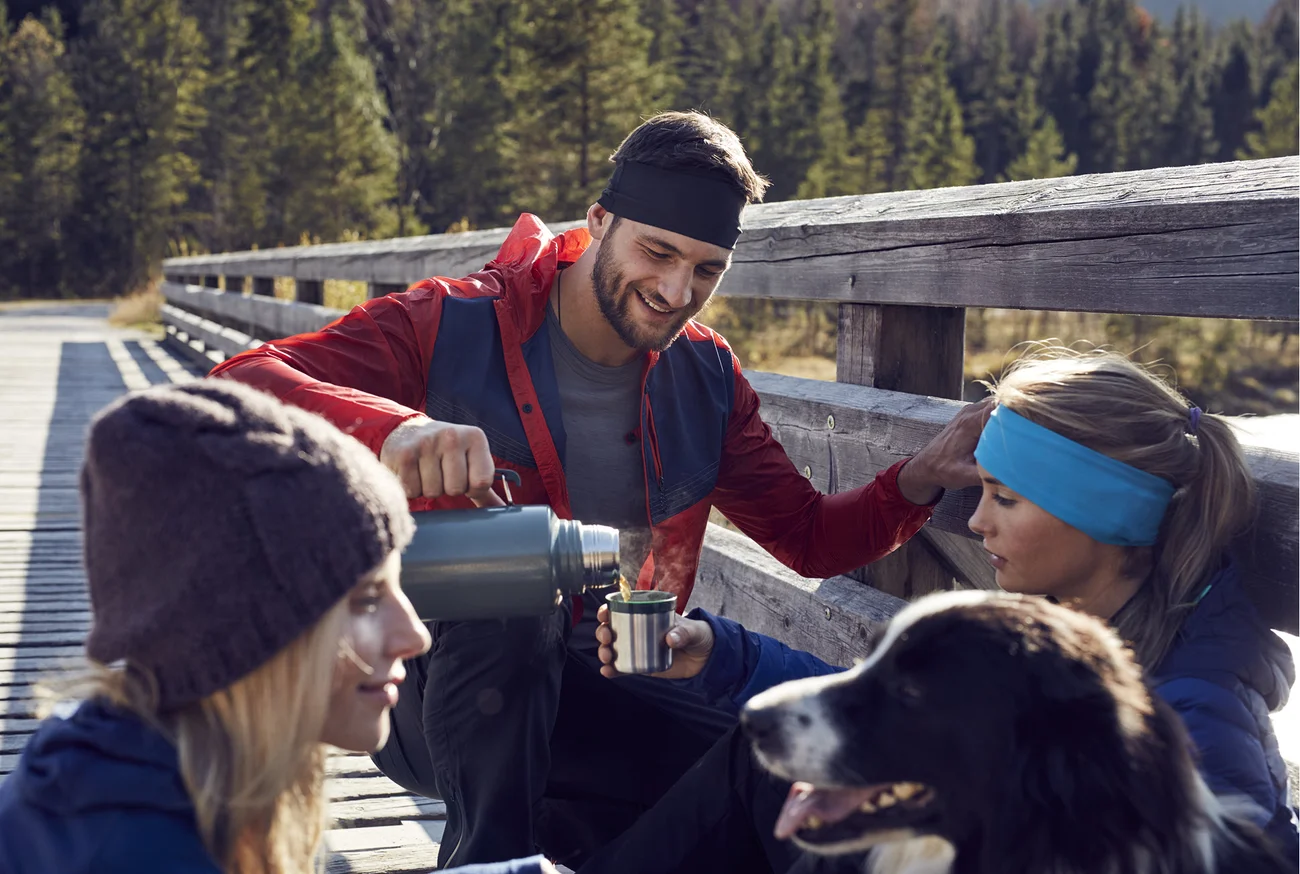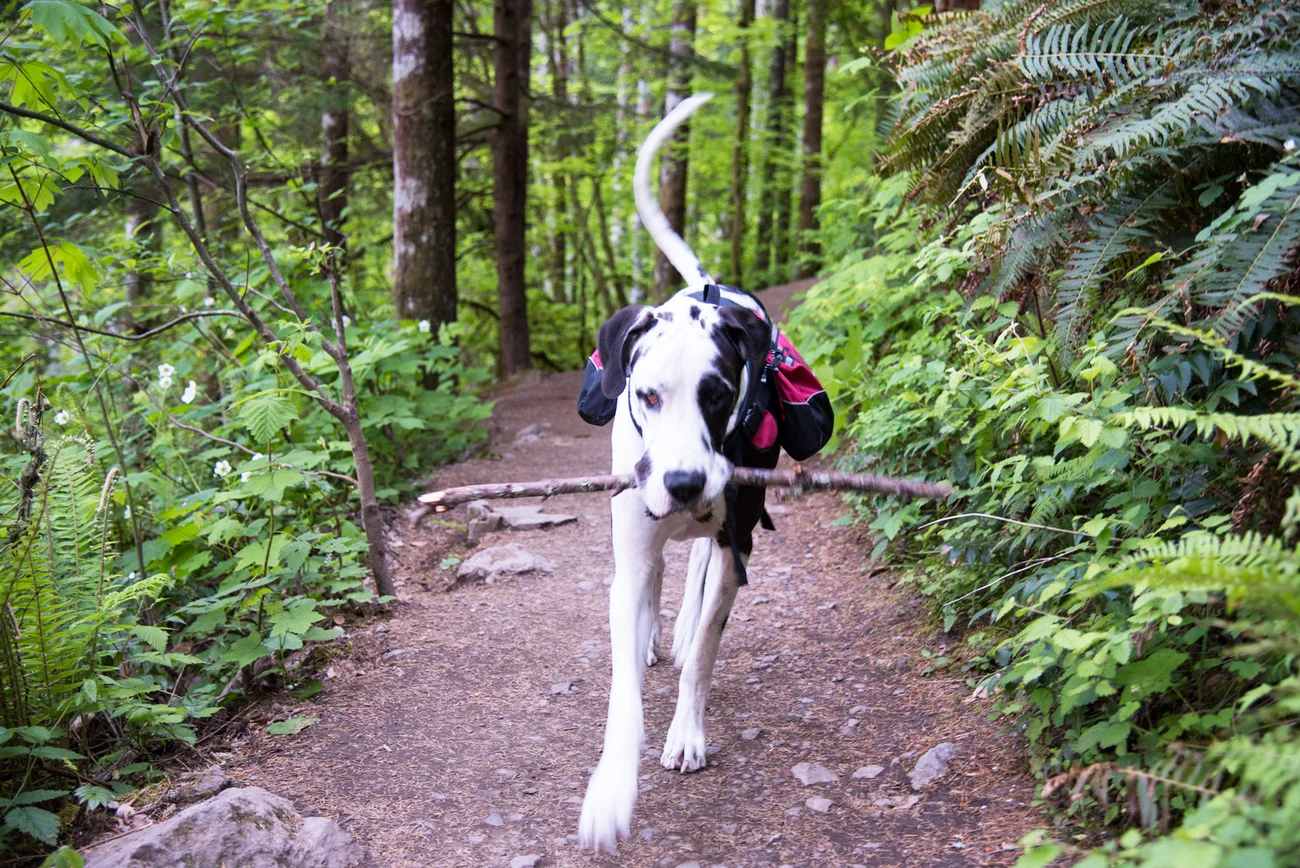popular searches

What To Know Before Going Hiking With Your Dog
written by Ellie Walker
What’s great about hiking with your dog is that it’s an activity that isn’t limited to a single season – it can be enjoyed throughout the year! If you’re getting ready for your first hike with your dog, we’ve put together a list of everything you need to know before you hit the trails.
Review the rules of the trail
If you’re hiking with your dog on a new trail, it’s a good idea to do some research beforehand so you’re familiar with the rules of the trails when it comes to dogs. If you’re visiting a larger national or state park, they will have rules for pets listed on their website. Smaller parks, or those without a website, will usually have signs at the start of the trail indicating rules for pets, such as:
- Which trails they can hike on
- When they need to be leashed
- Where they can run off-leash
It’s not guaranteed that every park will have such detailed signage or a website so when in doubt, it’s always best to keep your pet on a leash – especially if they’re still working on their recall skills.
Don’t forget snacks and water
When packing snacks and water for yourself, don’t forget to bring a little extra for your dog! The amount of water your dog needs per day is calculated by multiplying 60mL by the number of kilograms of body weight, but more may be needed on days when they do strenuous activities, such as hiking. Depending on the length of the hike, you may also want to bring some of their favorite Freshpet recipes for a mid-hike refueling snack.
Know how to keep them warm in the cold months
While some dogs are born to thrive in cold weather, others need a little extra help to stay warm. If you’re hiking with your dog during the winter months, ensure that your pup has the equipment they need to stay nice and warm. This could include:
- Boots: Boots do a great job of protecting your pup’s sensitive paws from the elements. If you’re going to invest in a pair of boots, you can save money by choosing a pair that will work for all seasons, like the EXPAWLORER Waterproof Dog Shoes.
- Vest: If your dog only needs a little extra protection to stay warm, a vest is a great option. The Hurtta Summit Parka gives their torso an added layer of warmth while keeping their legs free while navigating the hiking trails.
- Full snowsuit: For some dogs, boots and a vest just won’t cut it – they need a full-body snowsuit to be truly comfortable outside. The Canada Pooch Snowsuit has a waterproof exterior and a thermal foil lining to keep your pup warm on even the most inclement days.
- Rain suit: If you live somewhere where winter is more wet than snowy, then you’ll want Canada Pooch’s Slush Suit. This full-body rain suit will protect your pup from rain to slush and everything in between, meaning it can be used for hikes from fall straight through to spring.
Check the humidity during the warm months
If you’re hiking with your dog on a tree-covered trail rather than an open, concrete path, you don’t have to worry about direct sun or the ground being too hot. However, you must be aware of the humidity. The level of humidity in the air plays a big role in how well your pet can regulate their body temperature. Dogs pant to evaporate moisture from their lungs and remove heat, but if the humidity is too high then panting isn’t enough to cool them down. To avoid a potentially deadly situation, make sure you’re aware of the signs of heat stroke in dogs. This infographic from the SPCA of Texas outlines everything you need to know about extreme heat and dogs, including the key signs of heat stroke.
Know which plants are dangerous for dogs
You might be surprised to know that a number of common plants you see on hikes are toxic to dogs. Some of these include:
- Daffodils: If your dog eats the bulb or flowers of a daffodil, it can cause an upset stomach, vomiting, exhaustion, and uncoordinated movements.
- Ivy: Contact with your dog’s skin can cause irritation in the form of redness or even blistering and if consumed, your dog may experience stomach pain, diarrhea and vomiting.
- Lilies: Several varieties of lilies are poisonous to dogs, including amaryllis, lily of the valley, and autumn crocus. If consumed, they can cause vomiting, tremors, and in serious situations organ failure.
The ASPCA has a great database of plants that are toxic to dogs, but if you’re not an expert at plant identification don’t worry. The easiest way to know what plants are around you is by downloading a plant identification app, such as Google Lens.
Bring the right pet waste bags
Even when hiking with your dog on pet-friendly trails, it’s important that you always clean up after they do their business. While some trails may have a station with free bags at the start, it’s a good idea to bring your own supply just in case. An easy way to bring some eco-friendliness into this activity is to swap your normal poop bags for a compostable option. When choosing an eco-friendly poop bag, look for one that says “fully compostable”, such as those made by BioBag, as biodegradable bags don’t always break down completely in landfills.




